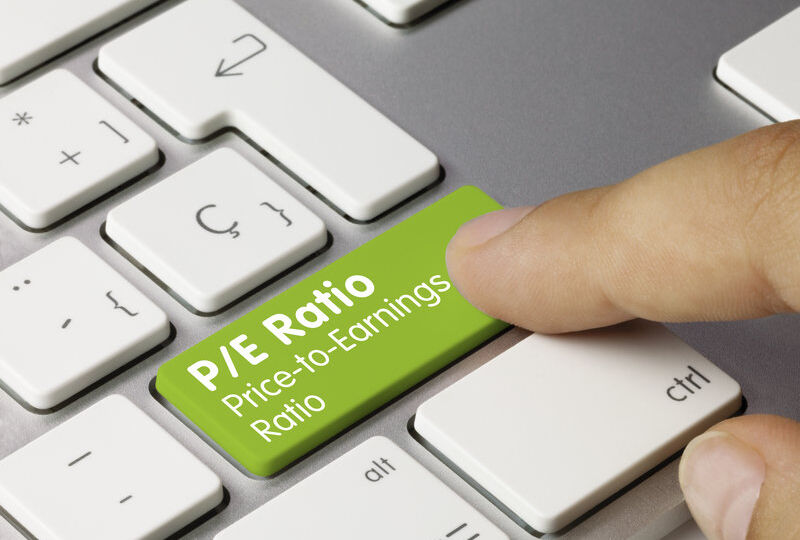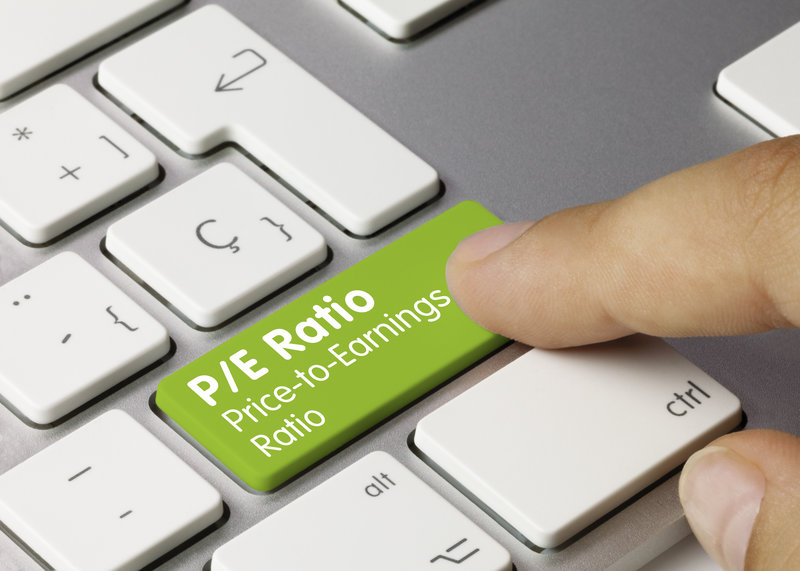

One of the biggest mistakes I see new investors make is their use of the PE ratio.
The ubiquitous P/E ratio is typically the first metric investors learn on their journey towards financial freedom.
But the P/E ratio has some significant drawbacks that you should be aware of.
1. Price is not a good measure for what a company is worth
The first issue with the P/E ratio is the ‘P’ part of the formula.
Typically, the ‘P’ stands for the share price which corresponds to the market capitalisation of the company.
But there’s a problem with using only market capitalisation.
Market cap only represents the contribution of equity shareholders. Which means it doesn’t include any debt or cash on the balance sheet.
If you want to know the true worth of a company surely you need to include debt and cash?
To do so, it’s better to use an alternative such as enterprise value which is the market cap, plus total debt, minus cash.
Often, the market cap of a company will be similar to the enterprise value but sometimes it can be vastly different.
GE, for example, has a market cap of $52.31 billion but it’s enterprise value is more than double that at $111.1 billion. If you use market cap you get a lower P/E ratio than if you used the enterprise value.
So by substituting market cap with enterprise value the formula immediately becomes more useful.
2. EPS is not a good measure of company earnings
Just like the ‘P’ in ‘P/E’ is inadequate, the ‘E’ part of the formula is also misleading.
Typically, the ‘E’ represents earnings per share which is usually reported as the trailing twelve month EPS or in other words the net profit over the last 12 months.
The problem here is that EPS or net profit contains many different components and is therefore not necessarily a good indication of the real profitability of a company.
For example, net profit is reported after accounting procedures such as depreciation and amortisation. These techniques are often used to massage the books, by inflating profits and pushing out losses.
On top of that, net profit may include interest and tax payments, both of which are individual to the company and not necessarily useful for observing what profit a business is actually making.
So instead of using EPS or net profit, a better option is to use EBITDA which stands for earnings before interest, taxes, depreciation and amortisation. In other words, it is the true earnings before all those components have made their mark.
And so, instead of using the trusted PE, which is market cap divided by EPS you can see it’s better to use a more comprehensive formula such as enterprise value divided by EBITDA.
Now EBITDA also has drawbacks which is why investors are increasingly looking at other metrics such as free cash flow and operating profits. So instead of using EV/EBITDA it can be useful to also look at EV/FCF or EV/OP.
3. P/E ratios are lagging metrics
Now we’ve looked at the limitations of the formula, you should understand that P/E ratios (like most financial metrics) are inherently misleading because they are lagging metrics.
To put it plainly, when you plug in the earnings part of the formula you are typically using past data, typically the trailing 12 month EPS (or EBITDA).
Clearly, the problem with this is that the last 12 months of earnings are not necessarily predictive of the next 12 months.
For example, consider a company that has a market cap of $1 billion and in the last twelve months reported net profit of $100 million. That would give it a P/E ratio of 10 which historically would make it cheap and an attractive buy.
But consider that the last 12 months were in fact a stand out year for the company based on a series of unusual economic events unlikely to occur again. And in fact, the company usually makes only $20 million a year, not $100 million.
With a net profit of only $20 million, the PE ratio would be 50 which is historically a high and unattractive multiple.
In other words, the stock is priced at 10 times last year’s earnings but 50 times next year’s earnings. The stock either needs to decline in price to bring the P/E back to a more realistic level or it needs to grow it’s earnings in line with last year’s stand-out numbers.
Either way, you can see that buying the stock based on last year’s earnings is a flawed strategy because it doesn’t consider future earnings or the historical earnings average.
So instead of using trailing twelve month EPS, I like to look at the historical EBITDA over the last five years and then I make an estimate of how I think EBITDA will change over the next 3 years. I then do the same for free cash flow and hope that the numbers are relatively similar between the two.
This is the inherent problem of using any financial ratio that is based on past data so it’s important to be careful when looking at all such metrics.
4. P/E cannot be used for unprofitable companies
Divide any number by a negative and you end up with another negative. And so is the problem when using the P/E ratio for any company that reports negative earnings (of which there are many!).
Consider, for example, the market cap for Uber which is currently $56 billion. And consider the latest 12-month EBITDA which was -$8.2 billion.
56 divided by -8.2 results in a P/E ratio of -6.8. So if low P/E ratios are good then Uber must be outrageously cheap. But of course, we know it isn’t because the negative PE doesn’t tell us anything. All it tells us is this company hasn’t reported any profit in the last 12 months.
In other words, the P/E ratio for any unprofitable company is meaningless, except perhaps to say that this is a stock that may not provide any return unless it can soon get itself profitable.
In a similar vein, the PE ratio has limited ability when used to compare across industries. Low growth industries such as conglomerates or utilities typically command lower P/Es which cannot be compared to other industries such as tech stocks which often have high PEs or negative PEs.
Essentially, the PE ratio is limited in its ability whenever the main consideration is growth or profitability.
So, should you look at The PE Ratio?
Overall, the evidence for using P/E ratios is somewhat mixed.
Of course, there is the famous study by Professor Shiller that showed lower P/Es produced better long-term returns on average.
And in our own research, we found that lower P/Es can help improve trading strategies like trend following and mean reversion.
But it’s also obvious that using a PE ratio blindly goes against common sense – because of the limitations of the formula, the information it represents and the inherent problems with all such formulas.
Then again, if the naive P/E ratio can show a slight edge for investors on its own, imagine what could be achieved with a more sophisticated formula?

I would suggest addition of the radical PEs as a clear warring of extreme danger. As I have moved from all the TA that has no evidence [thanks for the book] I now look at reserve cash, P&L on a cash basis, inventory balance as a per cent of sales. Place in technology, design theory, management. To survive we have to get to some true balance and how the euphoria of rising pricing takes over reason. As I only trade and own dividend stocks until a hard asset is found to replace stocks. I think the next item is how to fix broken trades. Reduction of loss is the key to winning as a trader. Learning how to make good decisions is the TA question but I think you need to read a lot of data and do your own math. And get great help from a real pro like JOE!
Yes, extreme PE’s, measured correctly = extreme danger 🙂
The reality is, no one indicator is going to give you enough information and help you decide which direction a stock will go if you are looking at buy and hold. PEG is a decent indicator when used with YoY Earnings and Growth rates and PEG is more reliable than PE. I’m surprise that PEG wasn’t mentioned in this article.
If I’m doing swing trading, I’m looking at RSI, 20/50/100/200 Day MA’s, VWAP and others.
I agree with you. And yes I like PEG too.